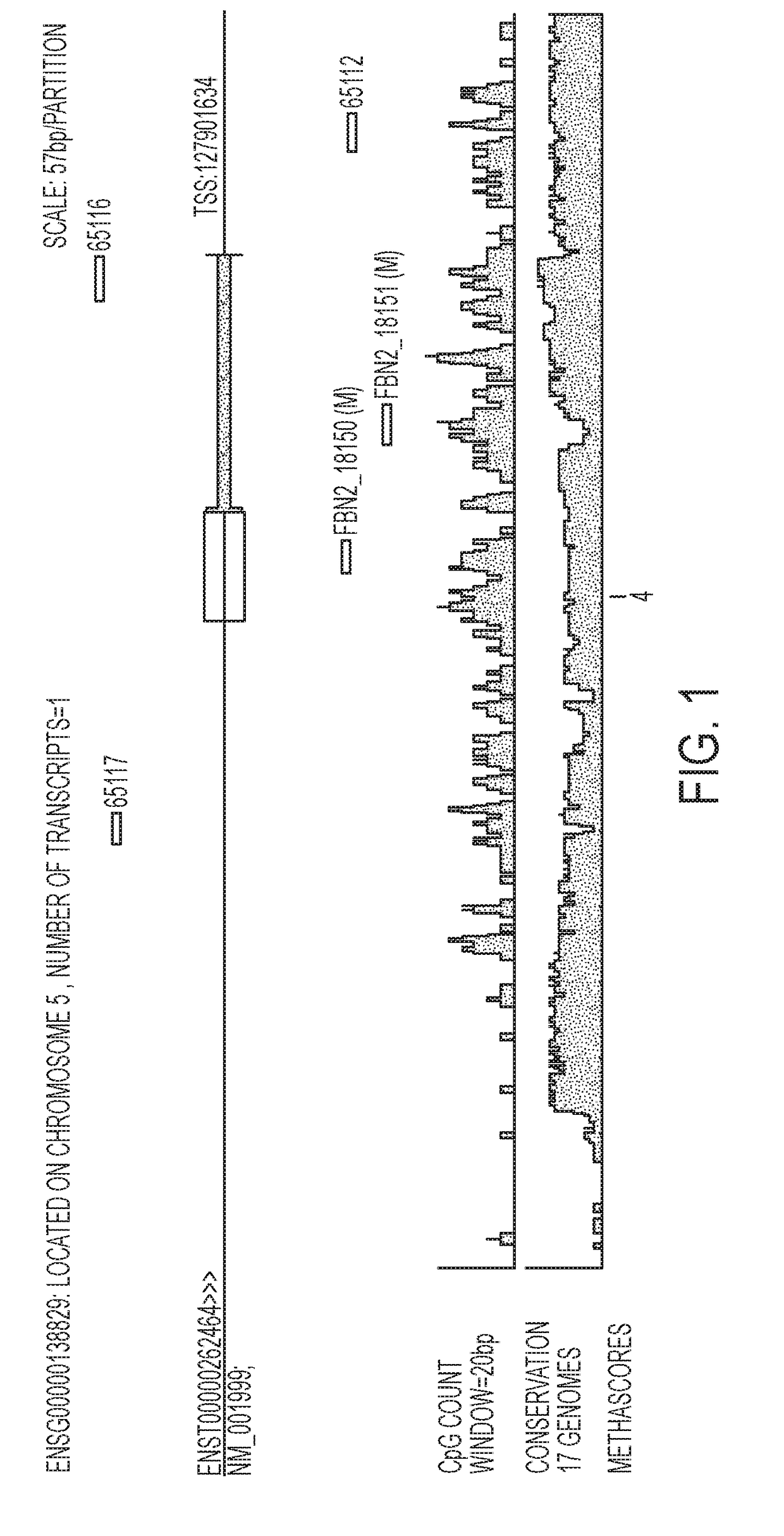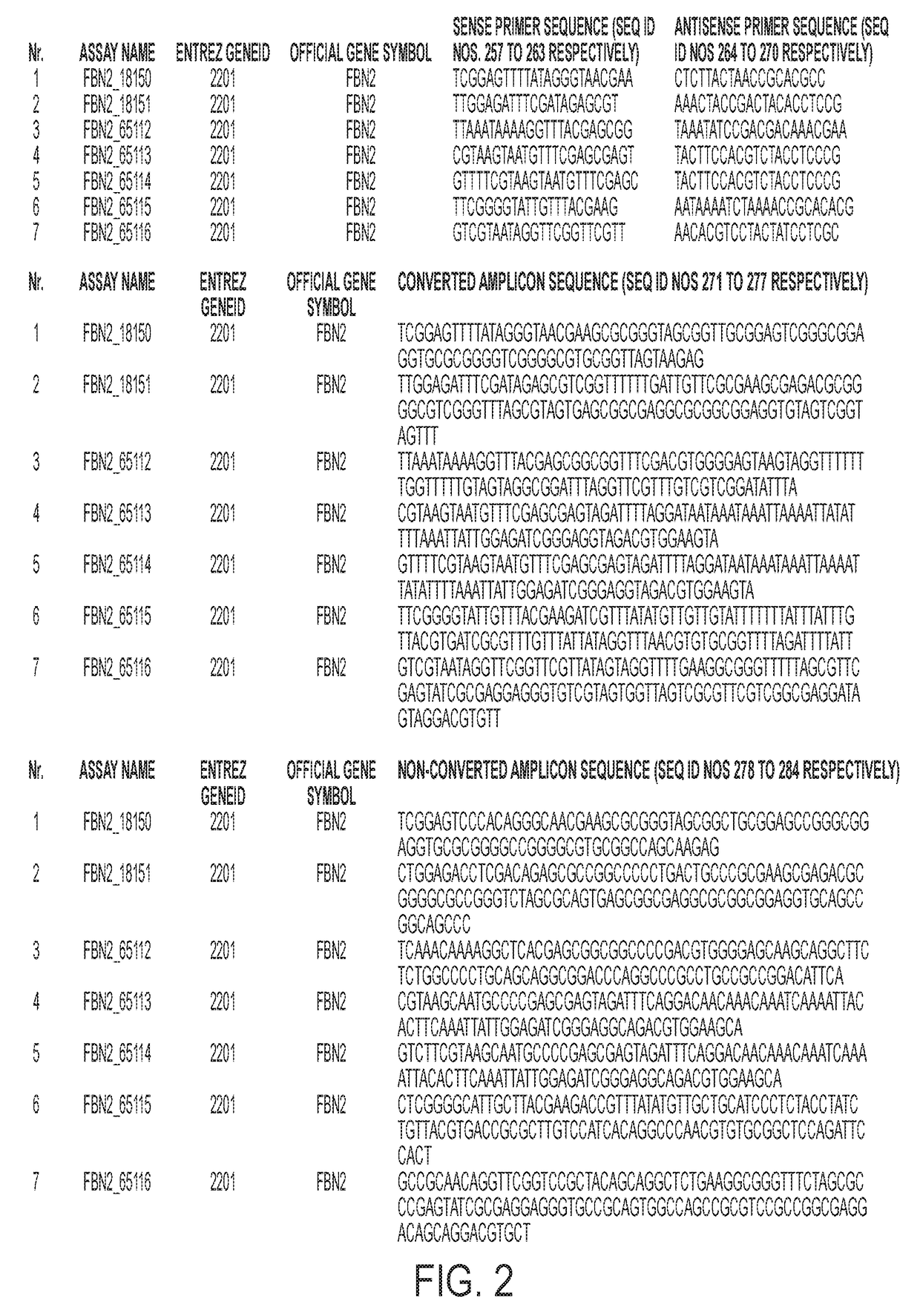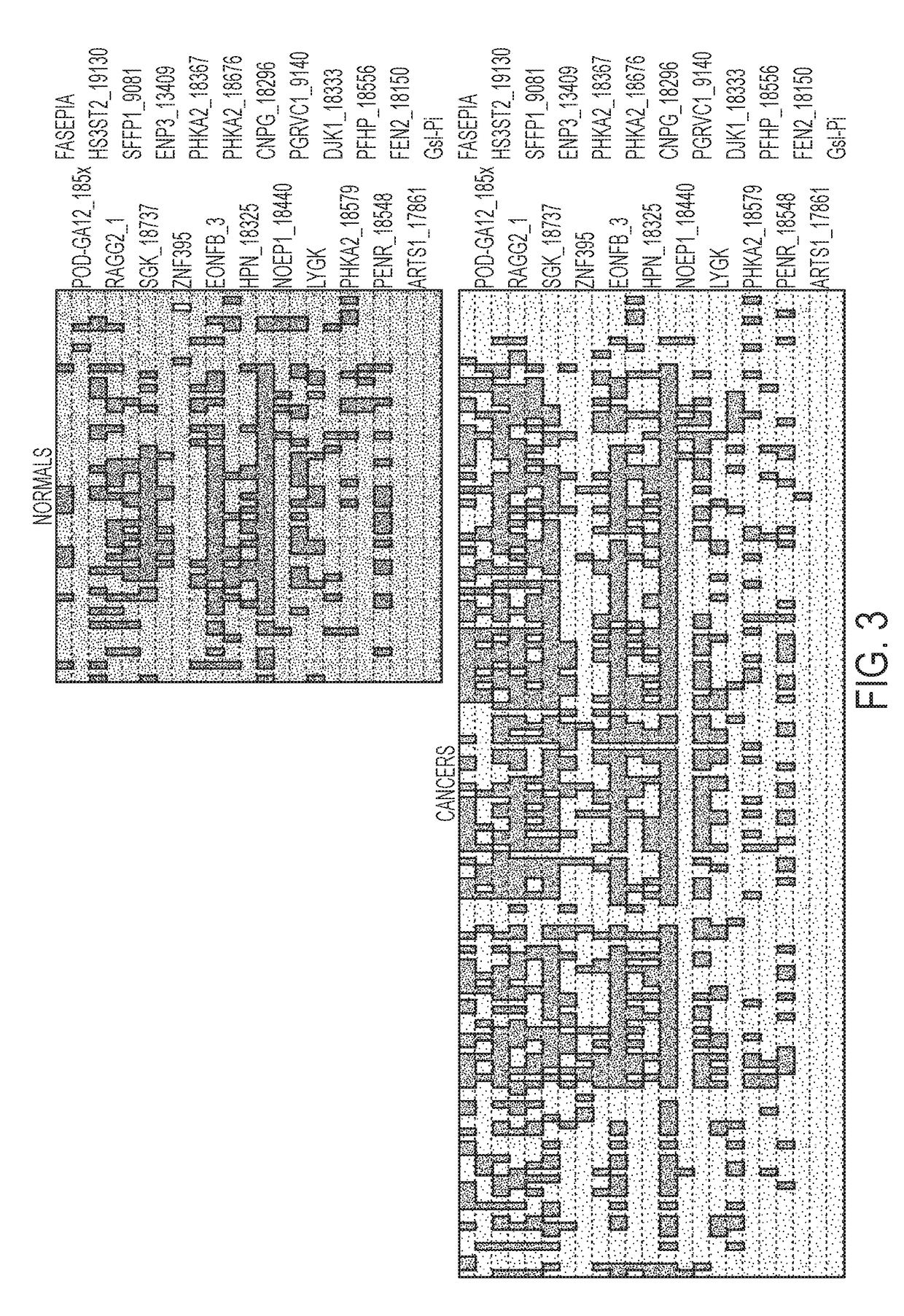Detection and Prognosis of Lung Cancer
a technology for lung cancer and detection and prognosis, applied in the field of cancer diagnostics and therapeutics, can solve the problems of high mortality rates
- Summary
- Abstract
- Description
- Claims
- Application Information
AI Technical Summary
Benefits of technology
Problems solved by technology
Method used
Image
Examples
example 1
of Candidate Genes
[0053]Using re-expression profiles of lung cancer cell lines, candidate genes were identified and the most promising markers were tested on tissue using the Base5 methylation profiling platform (Straub et al. 2007). Differential methylation of the particular genes was assessed using Base5 methylation profiling platform as follows: DNA was extracted from lung samples, bisulfite converted, and selected regions of the particular genes were amplified using primers whose sequence represented converted or non-converted DNA sequences. Amplification was monitored in real-time set up using cybergreen. Two robust data analyses designed to cope with inherent variance (i. e., noise) in measured Ct and Tm values were applied to withhold 64 different assays for detecting differential methylation of ACSL6, ALS2CL, APC2, BEX1, BMP7, CBR3, CD248, CD44, CHD5, DLK1, DPYSL4, DSC2, EPB41L3, EPHB6, ERBB3, FBLN2, FBN2, FOXL2, GSTP1, HS3ST2, IGFBP7, IRF7, JAM3, LOX, LY6D, LY6K, MACF1, MCA...
example 2
ection of Assays for Base 5
[0090]Finally a total number of 80 different assays (62 different genes), comprising:[0091]64 assays designed for detecting the methylation status of 49 cancer markers identified by the aforementioned strategy,[0092]assays for known published markers, and[0093]good performing assays for cancer markers from other in-house cancer projects, were retained for analysis.
[0094]Differential methylation was assessed using the Base 5 platform; genes were ranked based on the best selectivity (sensitivity and specificity) between human lung cancer tissue and normal lung tissue samples. The investigated genes were ACSL6, ALS2CL, APC2, ARTS-1, BEX1, BMP7, BNIP3, CBR3, CD248, CD44, CHD5, DLK1, DPYSL4, DSC2, EDNRB, EPB41L3, EPHB6, ERBB3, FBLN2, FBN2, FOXL2, GNAS, GSTP1, HS3ST2, HPN, IGFBP7, IRF7, JAM3, LOX, LY6D, LY6K, MACF1, MCAM, NCBP1, NEFH, NID2, PCDHB15, PCDHGA12, PFKP, PGRMC1, PHACTR3, PHKA2, POMC, PRKCA, PSEN1, RASSF1A, RASSF2, RBP1, RRAD, SFRP1, SGK, SOD3, SOX17, ...
example 3
er
[0096]Twenty three assays issuing from the Base 5 analysis were selected and transferred to the Lightcycler platform in order to confirm the Base 5 results using 3 independent sample sets (JHU, Baltimore, USA; UMCG, Groningen, The Netherlands and Ulg, Liege, Belgium) and to define the best lung cancer methylation markers (Table 5). A beta-actin (ACTB) assay was included as an internal control. The assays were applied on a 384 well plate. The samples were randomized per plate. On this platform Ct values (cycle number at which the amplification curves cross the threshold value, set automatically by the software) and melting curves (Tm) were generated on the Roche LightCycler 480 using SYBR green as detector and for verification of the melting temperature. The size of the amplicon and intensity of the signal detected were analyzed using the Caliper LabChip electrophoretic separation system. Well-defined cut offs were set up on Ct, Tm, amplicon size and signal to get similar methylati...
PUM
| Property | Measurement | Unit |
|---|---|---|
| temperature | aaaaa | aaaaa |
| temperature | aaaaa | aaaaa |
| total volume | aaaaa | aaaaa |
Abstract
Description
Claims
Application Information
 Login to View More
Login to View More - R&D
- Intellectual Property
- Life Sciences
- Materials
- Tech Scout
- Unparalleled Data Quality
- Higher Quality Content
- 60% Fewer Hallucinations
Browse by: Latest US Patents, China's latest patents, Technical Efficacy Thesaurus, Application Domain, Technology Topic, Popular Technical Reports.
© 2025 PatSnap. All rights reserved.Legal|Privacy policy|Modern Slavery Act Transparency Statement|Sitemap|About US| Contact US: help@patsnap.com



